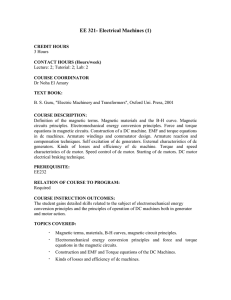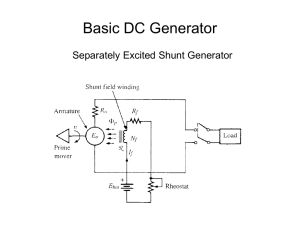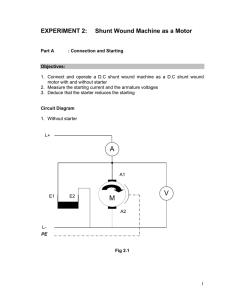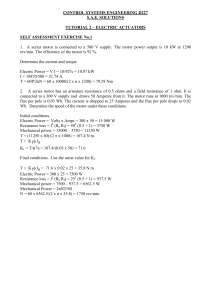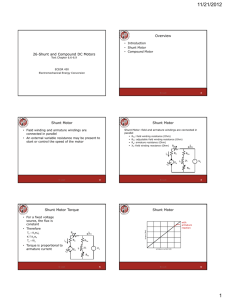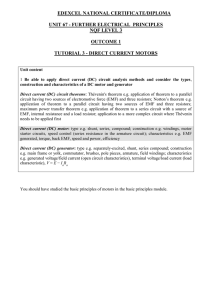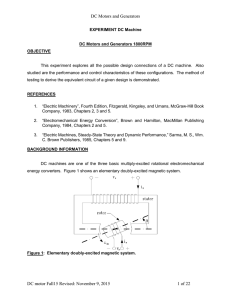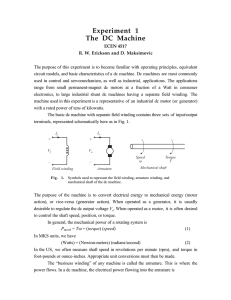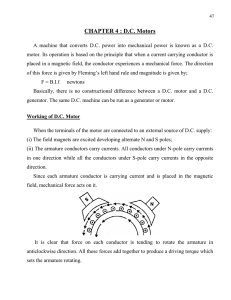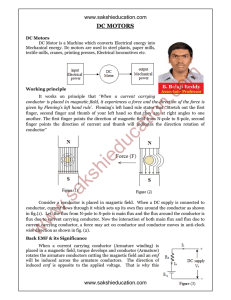SHUNT FIELD DC MOTOR - IDC
advertisement
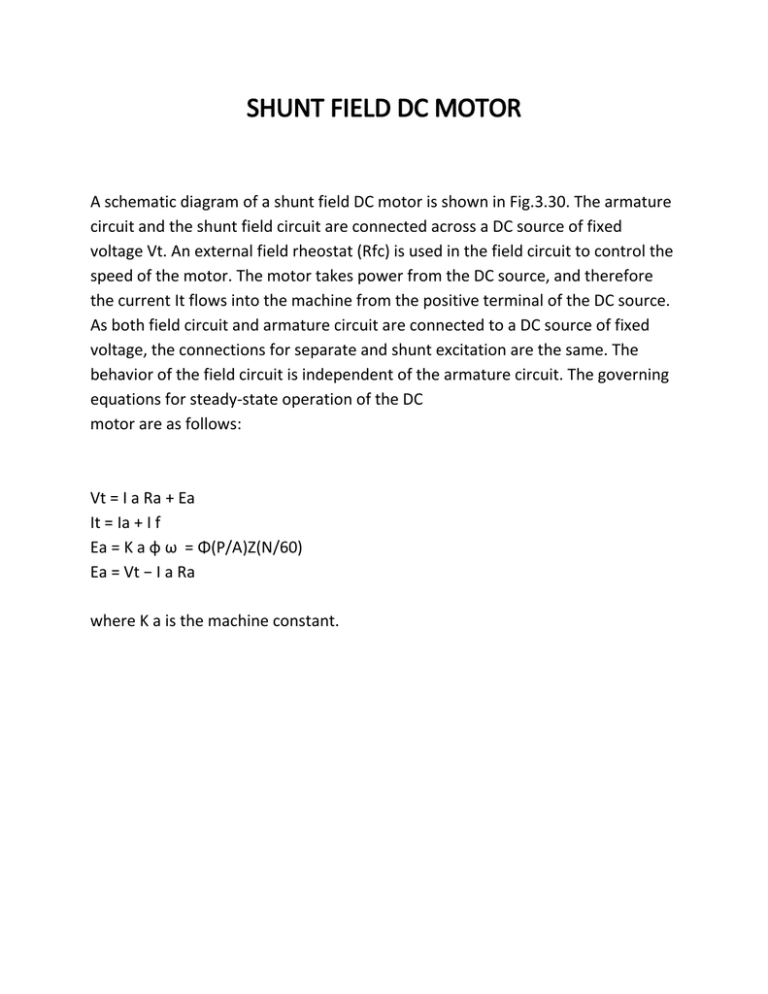
SHUNT FIELD DC MOTOR A schematic diagram of a shunt field DC motor is shown in Fig.3.30. The armature circuit and the shunt field circuit are connected across a DC source of fixed voltage Vt. An external field rheostat (Rfc) is used in the field circuit to control the speed of the motor. The motor takes power from the DC source, and therefore the current It flows into the machine from the positive terminal of the DC source. As both field circuit and armature circuit are connected to a DC source of fixed voltage, the connections for separate and shunt excitation are the same. The behavior of the field circuit is independent of the armature circuit. The governing equations for steady-state operation of the DC motor are as follows: Vt = I a Ra + Ea It = Ia + I f Ea = K a φ ω = Φ(P/A)Z(N/60) Ea = Vt − I a Ra where K a is the machine constant. The armature current I a and the motor speed ω m depend on the mechanical load connected to the motor shaft. Fig.3.30 Shunt DC motor equivalent circuit Torque Equation By the term torque is meant the turning or twisting moment of a force about an axis. It is measured by the product of the force and the radius at which this force acts.Consider a pulley of radius r meters acted upon by a circumferential force of F Newton which causes it to rotate at N rps Then, torque T = F * r Newton meter (N-m) Work done by this force in one revolution=Force * distance = F * 2π r Power developed = F * 2π r * N joule/second power developed = T * ω joule/second or watt Armature Torque of a Motor Let Ta be the torque developed by the armature of a motor running at N rps If Ta is in N-m, then power developed, Pdev = Ta * 2πN watt running at N rps If Ta is in N-m, then power developed, We also know that electrical power converted into mechanical power in the armature is Ea * Ia (3.33) Equating (3.32) and (3.33), we get Ta * 2πN = Ea Ia Since Ea = φZN(P/A) volts Ta * 2πN = φZN(P/A) Ia Ta=(1/2π) φZ(P/A) Ia Ta= 0.159 φZ(P/A) Ia Note. From the above equation for the torque, we find that Taα φ I a (a) In the case of a series motor, φ is directly proportional to Ia. (before saturation) because field windings carry full armature current. ∴Taα Ia 2 (b) For shunt motors, φ is practically constant, hence ∴Taα Ia Shaft Torque The whole of the armature torque, as calculated above, is not available for doing useful work, because a certain percentage of this is required for supplying iron and friction losses in the motor. The torque which is available for doing useful work is known as shaft torque Tsh . It is so called because it is available at the shaft. The horse-power obtained by using the shaft torque is called Brake HorsePower (B.H.P.) because it is the horse-power available at the brake. Source : http://mediatoget.blogspot.in/2011/07/shunt-field-dc-motor.html
